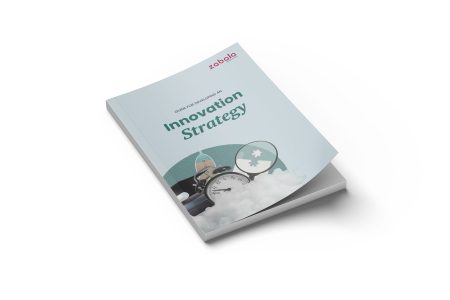
Opinion
INNOVATION
Innovation strategy

Guillermo Dorronsoro
Management Board Advisor / Executive Committee
INNOVATION CONSULTING
A balanced diet, properly combining incremental innovation and disruptive innovation, extends the life and increases the chances of survival of the company


Senior Innovation Strategy Consultant
More than 50 years ago, Fisher and Pry proposed that different technologies mature and improve over time until they are eventually completely replaced by a new technology that eliminates them from the market. The life cycle of a technology could be represented by an S-shaped curve relating the evolution of performance (Y-axis) to the time and effort spent to improve it (X-axis).
Many years earlier, Schumpeter described the existence of “waves of creative destruction”: a radical innovation disrupts the dominant value chain in a market sector, leading to wholesale changes in products, marketing channels and processes. We can see this today with the arrival of the electric car, which is an earthquake in the automotive value chain, with the disappearance of some players, the arrival of new ones, and major changes in many.
Illustration 2: New technologies replacing established technologies
Observing the S-curve of a particular technology leads us to two conclusions:
But the causes of a technology’s death are known in a forensic, i.e. academic, way, and what is needed are solutions for the living. The management of a company with an established technology needs to keep an eye on the new technologies with the greatest potential, but these new competing technologies will generate questions that are difficult to answer:
Thus, the management of a leading R&D company, with a market-leading technology with the best performance in its history, and which carefully and diligently monitors competing technologies, may nevertheless be unable to react in time, or may even underestimate or disregard the future threat of embryonic technologies.
After all, the new technology is initially uncompetitive (except for some very specific niches), but continues to improve in performance and begins to grow in market share, accelerating sharply in its improvement (growth phase) until the established technology is pushed out of the market. Clayton M. Christensen defined this phenomenon as the “innovator’s dilemma”.
Voilà! So companies should only pursue radical innovations, is that it? Certainly NOT: incremental innovation is the basis of the diet of the best companies:
Incremental innovation and radical innovation are by no means antagonistic terms. In fact, when a company has a successful radical innovation, it will spend as much time as possible applying incremental innovations to it. For example, the three-bladed wind turbine arose from a radical innovation, and has been improved through many incremental and some radical innovations. The companies that do best succeed in chaining radical innovation and successive incremental innovations. Take two servings of incremental innovation every day, and limit your radical innovation to three servings per week.
In any case, there is nothing to prevent that sooner or later a new technology will kill our current well-established technology. There are no magic recipes, but there are proactive habits to follow if we want our company to survive the waves of creative destruction:
The composition of this diet should be strategically individualised and personalised, developed with professional advice. And especially remember that waiting for the advent of new technology dramatically shortens life expectancy.

Pamplona Office
Senior Innovation Strategy Consultant

Opinion
INNOVATION

Guillermo Dorronsoro
Management Board Advisor / Executive Committee

Opinion
GLOBAL CHALLENGES

Íñigo Ozcoidi
Consultant expert in Digital & Industry

Opinion
Defence

Margherita Volpe
Security, Space & Defence Knowledge Area Leader

News
INTERVIEW
We interview Natxo de Marco, leader of Zabala Innovation's Energy Area

Opinion
INNOVATION

Guillermo Dorronsoro
Management Board Advisor / Executive Committee

Publication
INNOVATION CONSULTANCY
With this document, written by our colleague Guillermo Dorronsoro, we want to offer you a guide to carry out an innovation strategy in your company
This website uses cookies so that we can provide you with the best user experience possible. Cookie information is stored in your browser and performs functions such as recognising you when you return to our website and helping our team to understand which sections of the website you find most interesting and useful.
Strictly Necessary Cookie should be enabled at all times so that we can save your preferences for cookie settings.
This website uses Google Analytics to collect anonymous information such as the number of visitors to the site, and the most popular pages.
Keeping this cookie enabled helps us to improve our website.
Please enable Strictly Necessary Cookies first so that we can save your preferences!
This website uses the following additional cookies:
(List the cookies that you are using on the website here.)
Please enable Strictly Necessary Cookies first so that we can save your preferences!